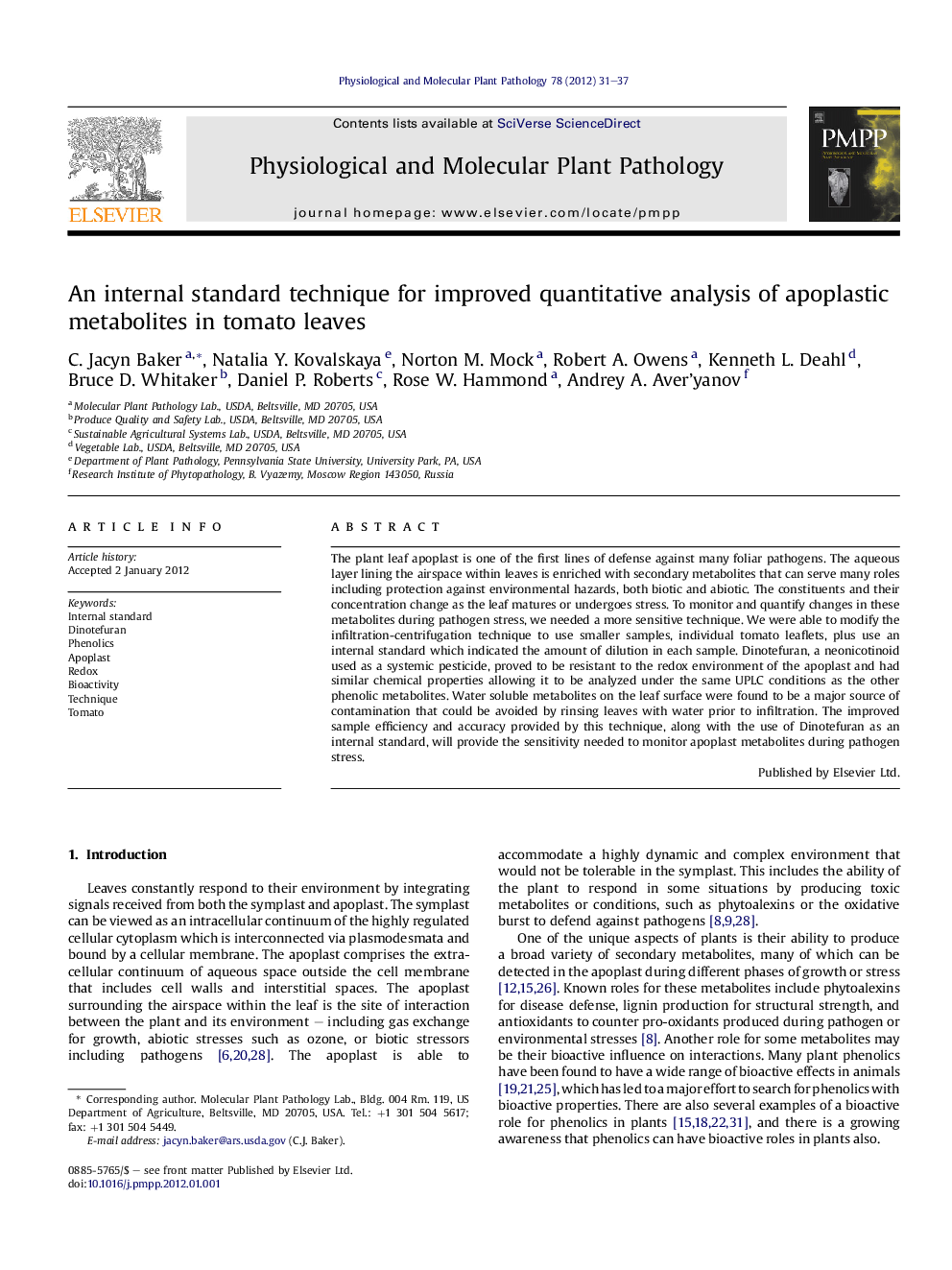| Article ID | Journal | Published Year | Pages | File Type |
|---|---|---|---|---|
| 2836458 | Physiological and Molecular Plant Pathology | 2012 | 7 Pages |
The plant leaf apoplast is one of the first lines of defense against many foliar pathogens. The aqueous layer lining the airspace within leaves is enriched with secondary metabolites that can serve many roles including protection against environmental hazards, both biotic and abiotic. The constituents and their concentration change as the leaf matures or undergoes stress. To monitor and quantify changes in these metabolites during pathogen stress, we needed a more sensitive technique. We were able to modify the infiltration-centrifugation technique to use smaller samples, individual tomato leaflets, plus use an internal standard which indicated the amount of dilution in each sample. Dinotefuran, a neonicotinoid used as a systemic pesticide, proved to be resistant to the redox environment of the apoplast and had similar chemical properties allowing it to be analyzed under the same UPLC conditions as the other phenolic metabolites. Water soluble metabolites on the leaf surface were found to be a major source of contamination that could be avoided by rinsing leaves with water prior to infiltration. The improved sample efficiency and accuracy provided by this technique, along with the use of Dinotefuran as an internal standard, will provide the sensitivity needed to monitor apoplast metabolites during pathogen stress.
► Dinotefuran was used as an internal standard after demonstrating it was redox inert and did not bind to tissue. ► High levels of rutin were found on the adaxail surface of the upper leaves. ► Tomato leaflets from the same leaf had similar apoplastic metabolite compositions.
